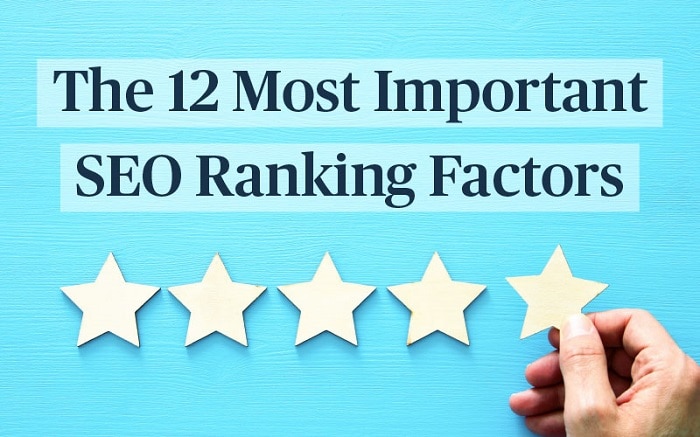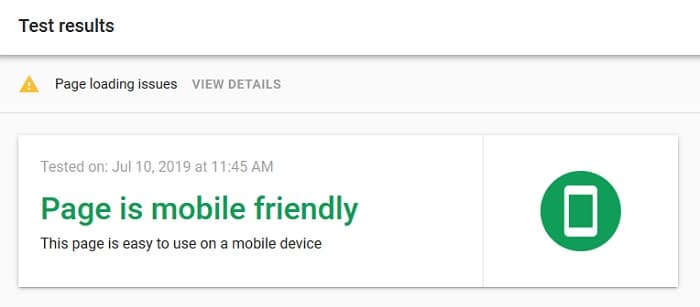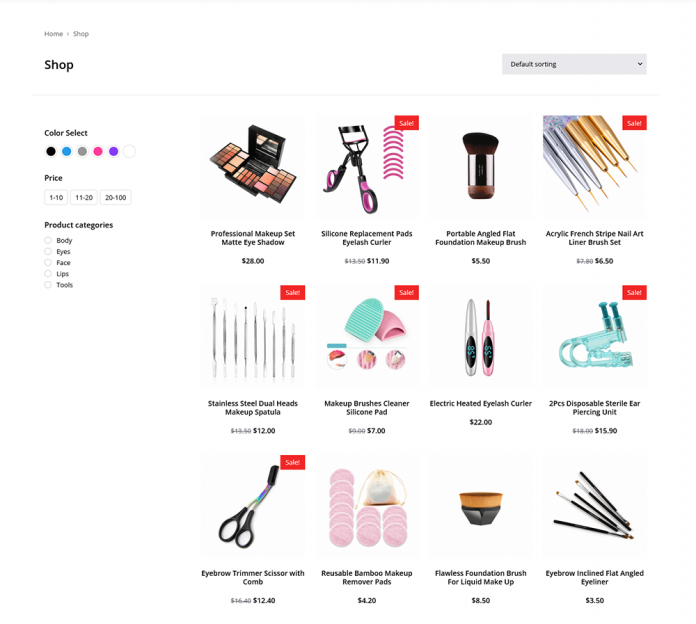There are around 200 SEO Ranking Factors that assist search engines in determining which sites should appear in search results and how they should rank. If you want your site to appear towards the top of search engine results pages (SERPs), you must optimize your online presence to account for these criteria.
The good news is that not all 200+ ranking factors are created equal. Some ranking elements carry more weight than others. Pay special attention to these 12 elements that have the largest impact on rankings when you build your SEO strategy.
Before we go into the top SEO ranking variables, it’s crucial to remember that they can and will change.
Google’s and other search engines’ ranking algorithms are continually evolving. Some aspects become more or less essential, while others are added or deleted. It’s critical to stay current on the latest ranking factors and to utilize an SEO audit tool to scan your site on a frequent basis to ensure that you’re following the most up-to-date SEO best practices.
Now, let’s take a look at how you may aid increase SEO ranks by optimizing your online presence to appeal to 12 key SEO ranking elements.
Explore more : PPC and SEO, Nofollow vs. Dofollow, Site architecture, SEO Ranking Factors
The Top 12 SEO Ranking Factors
The following are the top 12 SEO ranking factors (not ranked in order of importance).
- Site Security
- Crawlability
- Mobile-Friendliness
- Page Load Speed
- User Engagement
- High-Quality Content
- The Right Target Keywords
- Optimized Content
- Structured Data
- Consistent Business Listings
- Backlink Profile
- Domain Age
1. Site Security
Google has explored site security as a ranking factor since 2014. It is now one of the most significant Google ranking criteria on our list. The use of HTTPS encryption is referred to as site security. SSL certificates, which create a secure connection between a website and its users, are used on HTTPS-encrypted sites. It adds an additional layer of security to the information transmitted between users and the website.
Search engines aim to direct users to the most reliable sites, and HTTPS encryption demonstrates that a site is secure. If your website’s URL begins with HTTP rather than HTTPS, it is not safe, and you need to install an SSL certificate.
2. Crawlability
If search engines can’t find a site, they can’t rank it. That is why site crawlability is such a crucial SEO ranking element. Crawlability enables search engines to crawl a website and analyze its content in order to establish what the page is about and where it should rank.
Allow search engines to effectively crawl your site if you want Google to rank it.
- Send a sitemap to the major search engines.
- Check the status of your index in Google Search Console to see how many pages
- Google has crawled on your site.
- Use robots.txt correctly to notify search engines which pages they should access and which they should ignore.
3. Mobile-Friendliness
The term “mobile-friendliness” relates to how a website appears and functions when viewed on a mobile device. Mobile-friendly websites deliver a positive user experience by employing a responsive design that changes the content to look nice on all screen sizes. Because mobile devices are used to perform more searches than desktop computers (52.2 percent of internet traffic is generated by mobile devices, and this figure is increasing), mobile-friendliness is crucial to both search engines and consumers.
Submit your site to Google’s Mobile-Friendly Test to discover if it is responsive. It will notify you if there are any problems with your site’s mobile version.
4. Page Loading speed
Page load speed is another SEO ranking element related to user experience. Sites that take too long to load create a poor user experience. Because search engines understand that consumers want to get answers as quickly as possible, they prefer to display sites that load quickly for users. This is especially true for mobile sites since Google recently revealed that its Speed Update would include load speed as a ranking factor for mobile searches.
Use a site speed checker to ensure that your site loads swiftly. Try Alexa’s Speed Analysis tool, which is included with our comprehensive Site Audit, or Google’s PageSpeed Insights.
If your site is slow, consider adopting website caching, compressing data, minimizing the number of redirects, and other measures to improve load time.
5. User Engagement
Users are used by search engines to assist them to choose which pages to promote in search rankings. To determine which pages are better and more beneficial to searchers, they consider how users interact with results. Google accomplishes this through the use of an artificial intelligence engine known as RankBrain. Factors influencing user involvement include:
- CTR: The percentage of people who click on a search engine result when it is shown to them.
- Time on Site: The amount of time someone spends on a page after discovering it through a search engine.
- Bounce Rate: The percentage of visitors who depart after viewing only one page of a website found through a search engine.
These metrics assist search engines in determining if a search result is valuable to visitors, therefore optimizing your site content as well as search snippets to increase user engagement.
- Make use of high-quality web design and visuals.
- Use a natural and easy-to-follow isolated site architecture.
- Use internal links to assist users in navigating your site.
- Create interesting titles and descriptions for your search results snippets using meta tag SEO.
- Optimize your content for search featured snippets.
6. High-Quality Content
Another strategy to increase user engagement on your site and appeal to search engines is to provide high-quality content on a regular basis. One of the most essential SEO ranking elements is content. Because search engines aim to produce the greatest results possible, they prioritize sites with well-researched, in-depth, and well-crafted material.
Fresh content attracts search crawlers and increases search visibility while providing you with something valuable to share with your audience, making it a win-win situation for your marketing strategy.
Begin by building a plan for your website using content mapping, which includes creating landing pages and ongoing blog content.
7. The Appropriate Target Keywords
Don’t dive into content production blindly. Create content strategically by conducting keyword research to determine which keywords to target and topics to discuss. The process of identifying popular keywords that can generate traffic to your site is known as keyword research.
Consider how Google ranks keywords to assist you in selecting the ideal keywords for your content.
- Long-tail keywords: As the popularity of voice search develops, more people are searching for long phrases and inquiries. Appeal to this type of search by identifying long-tail keywords (keywords of three or more words) to target in your content, in addition to shorter generic keywords.
- Recognize the intent of keyword searches: The reason someone searches is known as search intent (i.e., because they want to learn, buy, or navigate to something). Google favors sites with content that matches search intent, so make sure you understand how different sorts of keywords transfer to different types of content at different stages of the buying funnel.
- Target phrases that are within the competitive range: Some keywords have a high level of competition and will be challenging to rank for. Concentrate on keywords that are competitive with your site. Use Alexa’s Advanced Plan’s Keyword Difficulty tool to quickly locate terms that are within your competitive capacity. The program takes into account your site’s authority and highlights keywords that your site can rank for.
8. Optimized Content
On-page SEO variables must also be considered to attract search engines to your content. On-page SEO refers to the process of optimizing each individual page on your website for a specific keyword. By optimizing your content for a single keyword, you inform search engines what the page is about and where it should rank.
Assign a distinct keyword to each page of your website. (Never assign the same keyword to more than one page on your site, since this might mislead search engines and result in keyword cannibalization.) The material should then be optimized for on-page SEO best practices.
Use an on-page SEO checklist to optimize your page, and then use Alexa’s On-Page SEO Checker to ensure you didn’t miss any optimization chances.
9. Structured Data
Structured data is another approach to inform search engines what a web page is about (and hence rank it accordingly). Structured data, also known as Schema Markup, is microdata that is added to the backend of a web page to instruct search engines on how to categorize and understand the content (such as identifying a business address, book title, recipe, or another type of information).
Structured data is a key SEO ranking element since it clearly communicates to search engines what information is relevant about a page. It’s particularly significant because structured data can lead to highlighted snippets in search, which can enhance click-through rates and rankings even further.
More information: Schema Markup 101: How to Create Rich Search Results and Improve SEO
10. Consistent Business Listings
Search engines evaluate brands based on their perception of their credibility, authority, and trustworthiness. The more established a brand seems online, the more likely search engines will boost its search visibility. This is why having consistent company listings is a ranking criterion.
Business listings, often known as citations, are largely a local SEO ranking element. However, all brands should execute fundamental citation setup and management, as well as:
Make a Google My Business page for your company.
Create business profiles on industry-specific directory websites.
Check that their NAP (business name, address, and phone number) is identical across all of their business profiles.
11. Backlink Profile
Backlinks are another indicator that a website is reliable and authoritative to search engines. Off-page SEO factors such as the amount and quality of links going to your site have a big impact on your search rankings.
Backlinks are sometimes regarded as the second most essential SEO ranking element after content. If you want your site to rank, you must develop a strategy for acquiring high-quality backlinks through activities such as guest posting, link acquisition, digital PR, and other link-building strategies.
More information: How to Get High-Quality Backlinks: 21 Strategies That Are Still Effective
12. Domain Age
The final ranking criteria may not be anything you can influence, but it is worth mentioning. The age of your domain, or the age of your website, is sometimes regarded as a ranking factor. While Google does not explicitly mention that this is one of their SEO ranking factors, research has shown that older domains tend to rank higher.
So, if you build a brand-new website, be aware that it will take some time for your SEO efforts to bear fruit. Your site’s search ranking will increase over time and with consistent SEO work, but it won’t happen quickly.
Is Your Website Ready for All SEO Ranking Factors?
It’s time to enhance your site now that you know what SEO ranking elements are most significant.
Use this guide to ensure you cover all of your SEO bases, whether you’re developing new content or optimizing current material: 50 SEO Best Practices That Will Spark Growth
You May also like sitescorechecker , Pro Site Ranker










